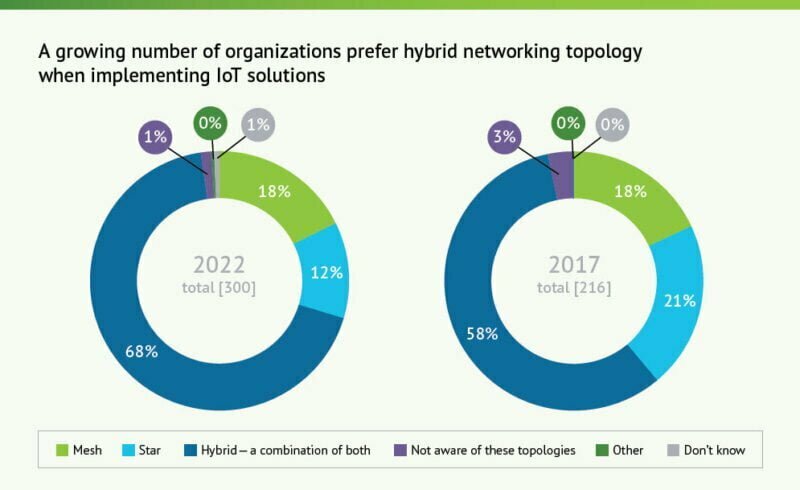 (Credit: Wi-SUN Alliance)
(Credit: Wi-SUN Alliance)Implementing smart building initiatives using the Internet of Things (IoT) is a top IT priority for global organizations for the next 12 months. But while the vast majority (92%) agree that they need to invest in IoT technologies in order to remain competitive, IT complexity and difficulties in proving ROI are creating challenges. Budget cuts due to the pandemic have had a more recent impact on project implementation.
A report from Wi-SUN Alliance shows that overall, plans to roll out smart initiatives have grown in the last five years. Security and surveillance is the most likely IoT use case to be rolled out, with 87% of respondents very likely or definitely planning to deploy the technology in the next 12-18 months, up from 77% in 2017. This is followed by distribution automation (82% up from 74% in 2017) and advanced meter infrastructure (80% up from 68% in 2017).
Although investment in IoT remains as crucial as it was in 2017, according to the report, findings highlight a change in top drivers for implementing IoT initiatives. The need to gain a competitive advantage increased to 29%, up from 20% in 2017, but the need to reduce operational costs (27% vs. 38% in 2017) and create business efficiencies (25% vs. 42% in 2017) declined. This suggests a shift from using IoT to improve internal processes and operations to seeing it as an opportunity to stand out in the marketplace. There is also an increase in those who say IoT use is being driven by “everyone is doing it or thinking of doing it.”
Almost half (47%) of all organizations have managed to fully implement their IoT strategy, lower than in 2017 (55%), possibly due to a growing understanding of what a “fully implemented strategy” is and what it involves. This is also lower among respondents in the UK than in the US (39% compared to 51%) despite the UK being more likely to see IoT enablement as a top three IT priority for the next 12 months.
Notably, Covid-19 has had an impact on project rollouts, with more than a third (37%) having to reprioritize spending, and 35% seeing budgets cut due to loss of revenue during the pandemic. There are, however, technologies that could allow substantial savings, such as RCA’s GRIDIoT Optimum Load Shaping tool which will help broadband operators to more efficiently manage their electrical loads and is projected to save broadband operators “up to 20% and more as technology improves.”
The biggest change for IoT adopters when considering a smart cities solution has been the importance of industry-wide open standards for IoT deployments. In the report, 86% of respondents feel that this is either very important or absolutely crucial, up from 78% five years ago, while 84% (up from 79% in 2017) believe the same when considering a smart utilities solution.
Other reports have also found that smart technology will increase throughout the next few years due to expanding technologies such as smart cities that are boosting the global data center power market. Another showed the findings of a new global study of international business and technology leaders on industrial transformation, looking at the intersection of digitalization and sustainability.